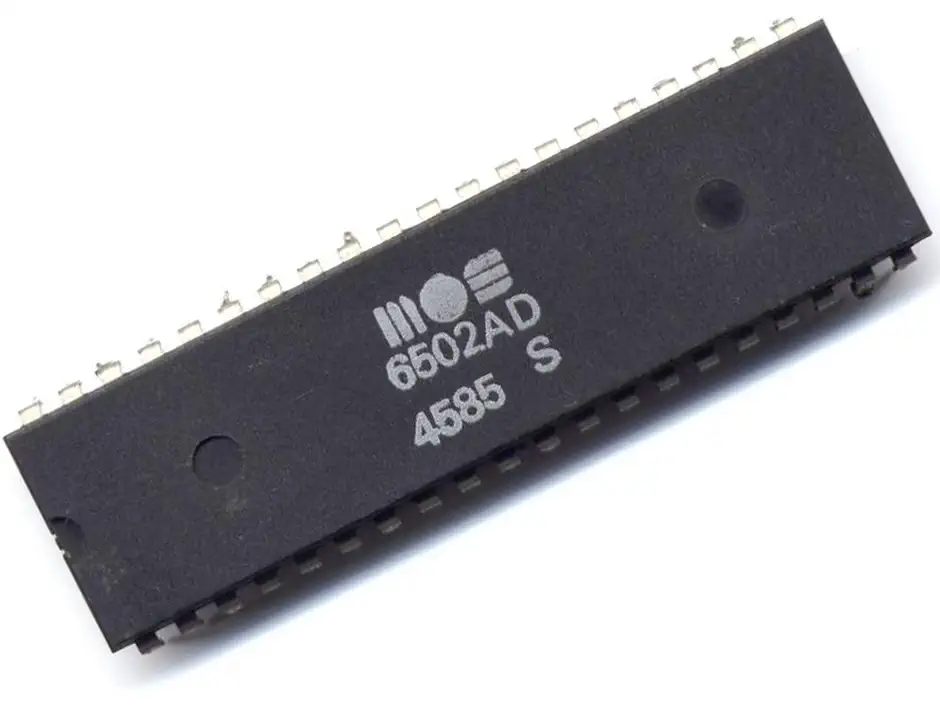Oric Atmos
In late 1983 the funding cost for continued development of Oric caused external funding to be sought, and eventually led to a sale to Edenspring Investments PLC. The Edenspring money enabled Oric International to release the Oric Atmos, which added an improved keyboard and an updated V1.1 ROM to the Oric-1.
Soon after the Atmos was released, the modem, printer and 3-inch floppy disk drive originally promised for the Oric-1 were announced and released by the end of 1984. A short time after the release of the Atmos machine, a modification for the Oric-1 was issued and advertised in magazines and bulletin boards. This modification enabled the Oric-1 user to add a second ROM (containing the Oric Atmos system) to a spare ROM-socket on the Oric-1 circuit board. Then, using a switch, the users could then switch between the new Oric Atmos ROM and the original Oric-1 ROM. This was desirable since the updated ROM of the Atmos contained breaking changes for some games which relied on certain behaviors or memory addresses within the ROM. This led to tape based software often containing a 1.1 ROM/Atmos version of the software on one side of the cassette, with a 1.0 ROM/Oric-1 version on the other. Earlier titles from publishers that no longer existed or had stopped producing software for the Oric were unlikely to be updated.
Programmable Sound Generator (AY-3-8910 compatible PSG)
The AY-3-8910 is a 3-voice Programmable Sound Generator, or PSG. It was designed by General Instrumet in 1978 for use with their own 8-bit PIC1650 and their 16-bit CP1610 computers.
The PSG is widely used in many arcade cabinets, pinball machines, and many micro-computers. Here is a list of some of the major brands of computer that used the AY-3-8910:
- Intellivision
- Vectrex
- Amstrad CPC range
- Oric-1
- Color Genie
- Elektor TV Games Computer
- All MSX-1 and MSX-2 computers
- ZX Spectrum home computers
General Instrument spun of MicroChip Technology in 1987 and the chip was sold under the MicroChip brand, and licensed to Yamaha as the YM2149F which the Atari ST range of computers use. Functionally the PSG is very similar to the Texas Instruments SN76489.
Variants:
-
AY-3-8910
Comes with 2 general purpose 8-bit parallel I/O ports, used for Keyboard and Joystick in for instance MSX. -
AY-3-8912
Same chip, but in a 28-pin package. Parallel port B is not connected to save cost and space. -
AY-3-8913
Same chip, but in a 24-pin package. Both parallel ports are not connected. -
AY-3-8914
The AY-3-8914 has the same pinout and is in the same 40-pin package as the AY-3-8910, except the control registers on the chip are shuffled around, and the 'expected input' on the A9 pin may be different. It was used in Mattel's Intellivision console and Aquarius computer. -
AY-3-8930
Backwards compatible but BC2 pin is ignored
YM2149F -
YM3439-D
CMOS version of the Y2149 in 40-pin DIP -
YM3439-F
CMOS version of the Y2149 in 44-pin QFP -
YMZ294
Variant of the YM3249 in an 18-pin package. Parallel ports not connected, and all sound channels mixed on 1 port. -
T7766A
Toshiba variant of the AY-3-8910, fully compatible. Used in some MSX models. - Winbond WF19054, JFC95101, and File KC89C72: Fully compatible versions of the AY-3-8910 produced for slot machines.
Yamaha Produced chip, same pin-out as the AY-3-8910, but pin 26 could halve the master clock. Can be used to replace the AY-3-8910 if pin 26 is left disconnected.
MOS 6502 CPU
The 6502 is an 8-bit MicroProcessor designed by MOS Technology. The team was led by Chuck Peddle and had also worked on the Motorola 6800. The 6502 is a simplified, but faster and cheaper design than the 6800.
The 6502 was introduced in 1975 and was the cheapest microprocessor on the market. Together with the Zilog Z80, the 6502 helped start the home computer revolution of the 1980s. The 6502 was used in a wide range of devices: the Atari 2600, the 8-bit Atari home computers, the Apple II, the Nintendo Entertainment System, the Commodore 64, the BBC Micro and many others. All used the 6502 or a variation of it.
The 6502 is a 1MHz design, while the 6502A is designed for 2MHz. The 6502A is 100% compatible with the original 6502.
Commodore soon bought MOS Technology, but conitnued to sell the microprocessor to competitors and licensed the design to other manufacturers.
Source: WikiPedia - MOS Technology 6502
RAM max: 48kB Sound Chip General Instruments AY-3-8912 Sound 3 Channel, 1 noise Display Chip none Display 40x28 8 color text, 240x200 + 3 text lines, 2 colors per 8 pixels/line. Best Text 40x28 in 8 colors Best Color 2 colors per 8 pixels Best Graphics 240x200 in 2 colors per 8 pixels Sprites none System OS Oric Extended Basic v1.0

